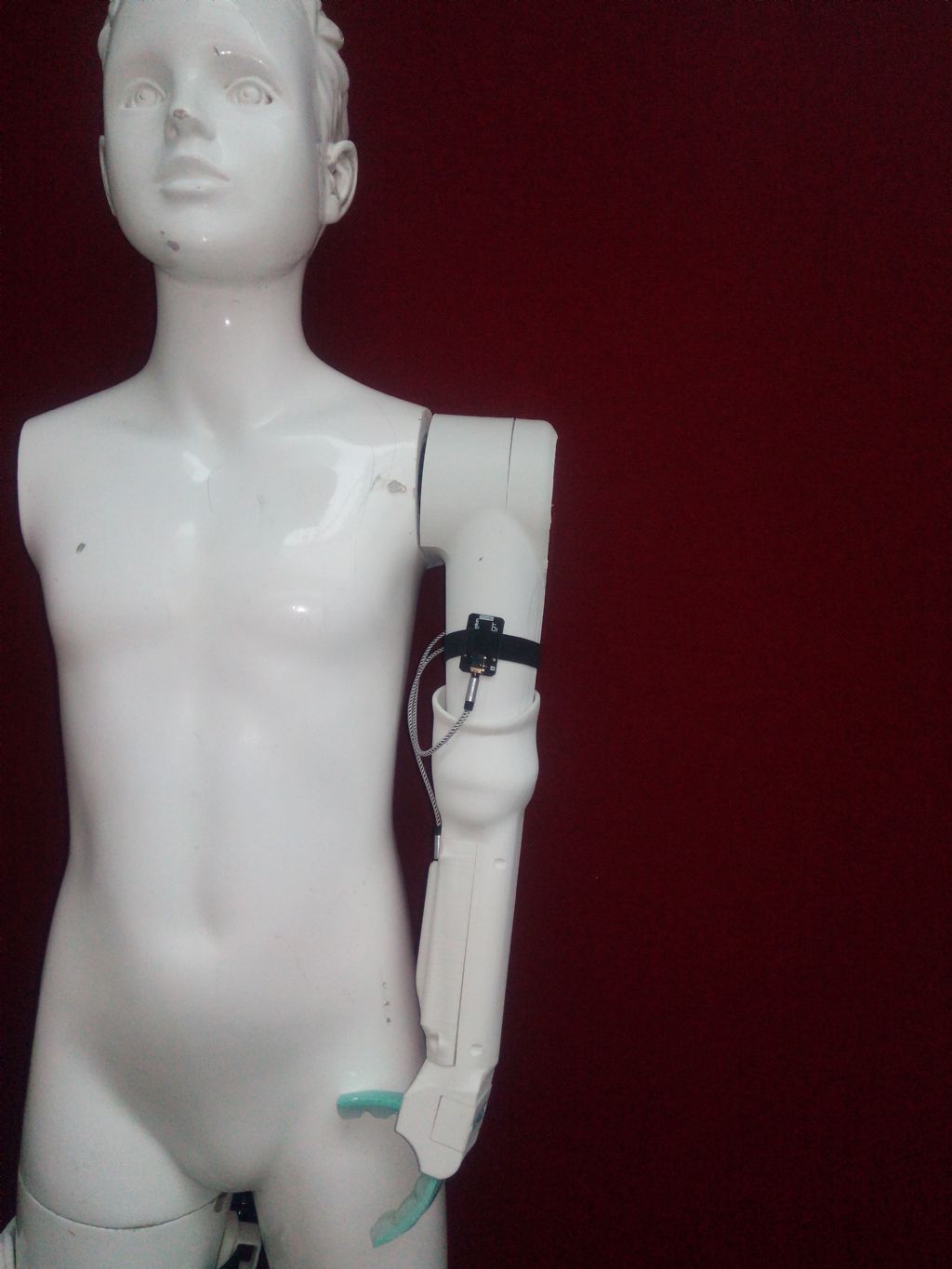Researchers from the University of Lincoln, UK, have developed a prototype for a 3D printed, sensor-operated prosthetic arm designed for children under two-years-old.
In an article published in IEEE Robotics and Automation Letters, a Soft-Grasp Infant Myoelectric Prosthetic Arm (SIMPA) was created using 3D scanning, additive manufacturing, and an armband-based Surface Electromyography (sEMG) system.
“Many traditional active prosthetics are unsuitable for toddlers as they are very time consuming to construct and heavy,” said Dr. Khaled Goher, Senior Lecturer in the School of Engineering at the University of Lincoln and lead engineer of the research.
“Our proposed system would utilize a seven-channel paediatric armband with motion sensors allowing infants to benefit from and become familiar with active prosthetics, with evidence showing that the earlier the exposure, the more likely for the prosthetics to be accepted and used throughout life.”
A SIMPA solution
According to the study, myoelectric prosthetics, which are controlled by electrical signals in the muscles, are commonly given to adults and not children due to the difficulty and expenses of down-scaling. This is due to the rate at which a child grows, which calls for the constant replacement of a prosthetic device.
Moreover, in cases where young children with upper limb amputation (ULA) have prosthetic devices, the child is prone to develop their own methods of grasping objects which can limit their motor neural skills.
With the use of additive manufacturing, low-cost, the team designed and fabricated a personalized prosthetics with gripped functionalities in order for a child to avoid future health problems such as asymmetric posture and muscular-skeletal pain due to an overreliance on a residual limb.

A child-sized 3D printed prosthetic arm
The main body of the SIMPA is 3D printed in ABS using the Ultimaker S5. The dimensions of the arm are based on data from a volunteer, which represents the size of a 4-year-old male forearm. Furthermore, a 3D scan of the stump used for socket modeling was sourced from the individual. This avoids the need for traditional stump plaster-casting, which is a time-consuming and uncomfortable process for the recipient of the prosthesis, the study states.
Soft grip fingers are integrated into the SIMPA which are operated with the armband as it is fitted with sensors to detect electrical signals naturally conducted by muscles. Following several tests, the researchers found that the SIMPA can enable a toddler to grip and lift various small objects in the same way they would with a natural arm. The study concludes that “the reduction in lead time and cost demonstrated by the presented design opens up the possibility of such a device becoming available from healthcare providers in high-income nations.”
“Correspondingly, in low-income nations, there is the opportunity for adoption due to the decentralized and low-cost nature of 3D printing techniques. The process of manufacturing prosthetic devices can be decentralized, utilizing a remote CAD designer in cases where the client is unable physically to visit a prosthetist.”
“SIMPA: Soft-Grasp Infant Myoelectric Prosthetic Arm” is co-authored by Daniel De Barrie, Rebecca Margetts, and Khaled Goher.

For more academic news from the world of additive manufacturing, subscribe to our 3D printing newsletter and join us on Facebook and Twitter. Looking for a new job? Visit our 3D Printing Jobs board.
Featured image shows the SIMPA on a child-sized mannequin. Photo via the University of Lincoln.


